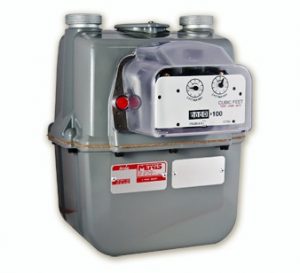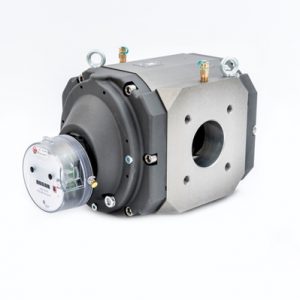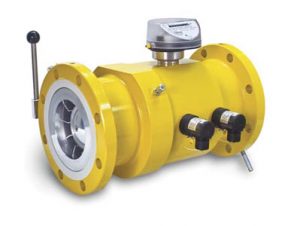Natural Gas Meter Evolution
Natural gas meter evolution has been led by consumer needs, our understanding of gas laws, and the need to increase the accuracy of the measurement. From counting lamp lights to compensating for pressure and temperature, accuracy has been the driving force behind improving and designing new meter types.
Natural Gas Meter History
In an earlier post, “Gas Metering Instrumental in Early Gas Distribution Success,” I discussed how the first U.S. gas companies demonstrated that flat-rate billing didn’t work and gas metering sparked growth for the natural gas distribution industry. Gas metering, however, didn’t happen overnight. In fact, when natural gas first came to the market, it was distributed through wooden pipes and sent to their customers’ gas lamps. The gas seller would then count the number of gas lamps at their customer location, and bill based upon the quantity of lamps.
Gas Flow Meter Types
Gas meter types are generally grouped into two categories: positive displacement meters (rotary and diaphragm meters) and inferential meters (orifice and turbine meters).
Diaphragm Meter

Pictured – the Itron Metris 250 – a diaphragm gas meter
It was the invention of the diaphragm meter which created a reasonable way to charge customers for their usage. In a diaphragm meter, the gas (or fluid) flows into the meter inlet which has an oscillating diaphragm. The compartment fills and displaces to the outlet and each revolution of the diaphragm determines the flow rate. This is why a diaphragm meter is categorized as a positive displacement meter.
With rising gas usage and the increasing cost of gas, a need was created to check the accuracy of meters and find ways to more precisely bill the customer for their usage. The natural gas meter prover is a piece of equipment that verifies a gas meter is accurate. The prover has been used since the early 1900s with the bell prover being commonly used as an industry reference standard.
While diaphragm meters are still commonly used today for residential gas meters and light commercial applications, they are limited by flow rates, and a need to develop other meter types was created.
Rotary Meter

Pictured is the Elster rotary gas meter, another popular choice for fiscal measurement of natural gas.
A rotary meter is another positive placement meter and is often used in higher volume or higher pressure applications. In this case, the gas or fluid flow is divided by a rotating impeller or rotor, which has vanes and with each rotation, the flow rate is determined.
Orifice Meter
An orifice meter was developed to handle large volumes of gas. It is a differential pressure meter or inferential meter as it infers the flow by measuring the pressure drop over an obstruction inserted in the flow. Orifice meters are a commonly accepted method of flow measurement for industrial applications; they have no moving parts, are easy to service and can measure dirty gas. Unfortunately, they have limited turndown and do not handle a wide range of flow rates. They also have poor low flow sensitivity and require gas static pressure, differential pressure, viscosity, density and temperature to accurately measure gas flow.
Turbine Meters

Honeywell Elster TRZ2 turbine meters are accurate and reliable for measuring the gas in gas distribution and transmission, industrial plants and business operations.
Like the orifice meter, a turbine meter also infers volumetric flow. For a turbine meter, the volumetric flow rate is calculated based upon the angular velocity of a rotor inside the meter. A turbine meter has high turndown and good accuracy. It also has moving parts so gas cleanliness must be considered and it requires pressure and temperature compensation. This meter type is limited to measuring low flow rates.
Other volume gas meters include ultrasonic flow and Coriolis.
Volume Correction
The need to accurately measure natural gas has led to the development of various styles of meters. Gas meters, however, measure natural gas volume. In my topic of “Gas Laws and Natural Gas Flow measurement,” I revealed the impact gas pressure and temperature have on gas volume. Meter accuracy has always been subject to volume correction to adjust for the gas laws, including Boyles Laws and Charles Law.
In my next post, I explore the history of natural gas volume correction from mechanical to electronic correctors.




